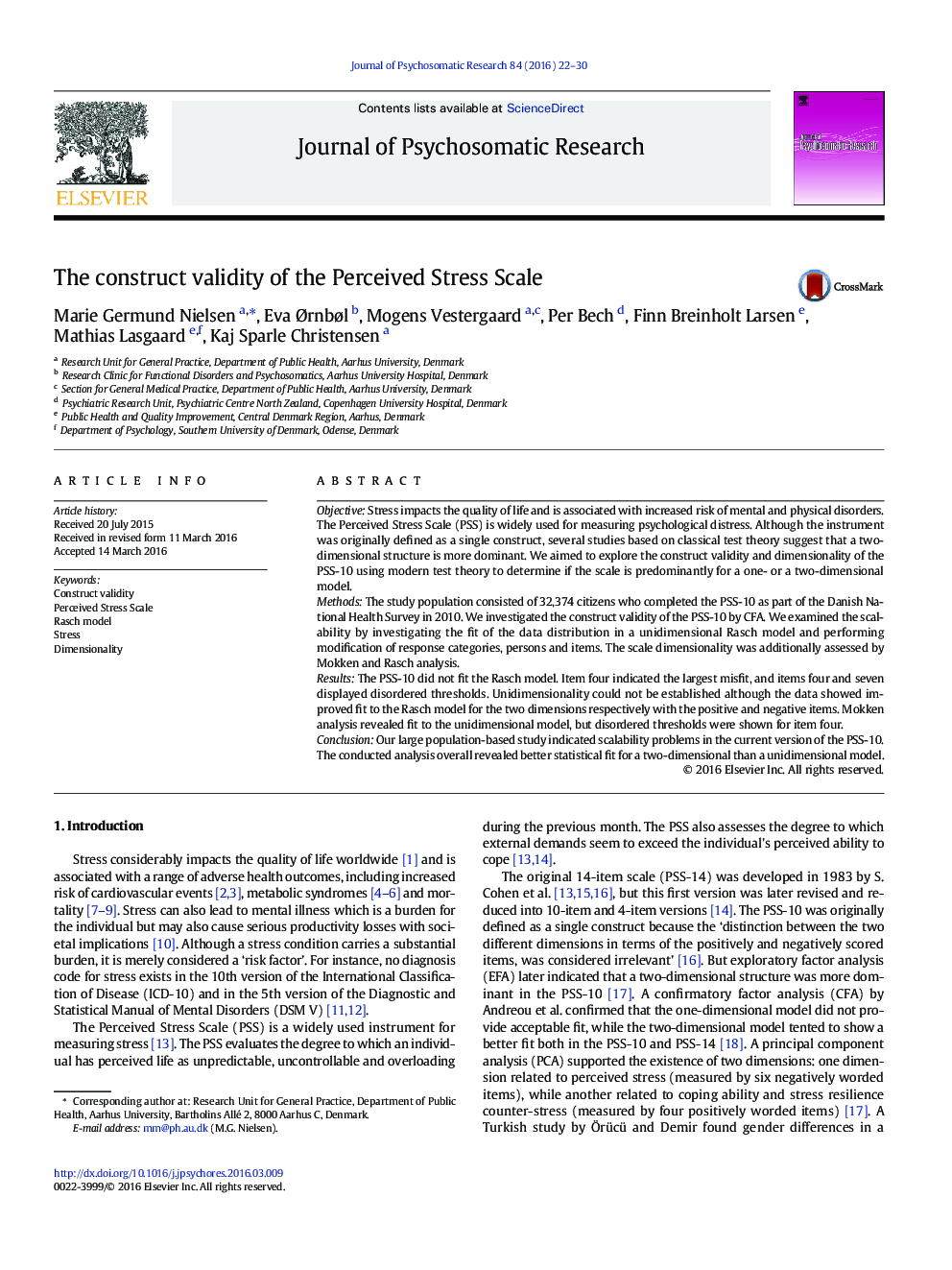| Article ID | Journal | Published Year | Pages | File Type |
|---|---|---|---|---|
| 949139 | Journal of Psychosomatic Research | 2016 | 9 Pages |
•We studied the construct validity of the Perceived stress scale with modern test theory; Rasch model and Mokken analysis.•Our large population-based study indicated that the current version of the PSS has scalability problems.•An analysis revealed better fit for a two-dimensional than a unidimensional model.
ObjectiveStress impacts the quality of life and is associated with increased risk of mental and physical disorders. The Perceived Stress Scale (PSS) is widely used for measuring psychological distress. Although the instrument was originally defined as a single construct, several studies based on classical test theory suggest that a two-dimensional structure is more dominant. We aimed to explore the construct validity and dimensionality of the PSS-10 using modern test theory to determine if the scale is predominantly for a one- or a two-dimensional model.MethodsThe study population consisted of 32,374 citizens who completed the PSS-10 as part of the Danish National Health Survey in 2010. We investigated the construct validity of the PSS-10 by CFA. We examined the scalability by investigating the fit of the data distribution in a unidimensional Rasch model and performing modification of response categories, persons and items. The scale dimensionality was additionally assessed by Mokken and Rasch analysis.ResultsThe PSS-10 did not fit the Rasch model. Item four indicated the largest misfit, and items four and seven displayed disordered thresholds. Unidimensionality could not be established although the data showed improved fit to the Rasch model for the two dimensions respectively with the positive and negative items. Mokken analysis revealed fit to the unidimensional model, but disordered thresholds were shown for item four.ConclusionOur large population-based study indicated scalability problems in the current version of the PSS-10. The conducted analysis overall revealed better statistical fit for a two-dimensional than a unidimensional model.
